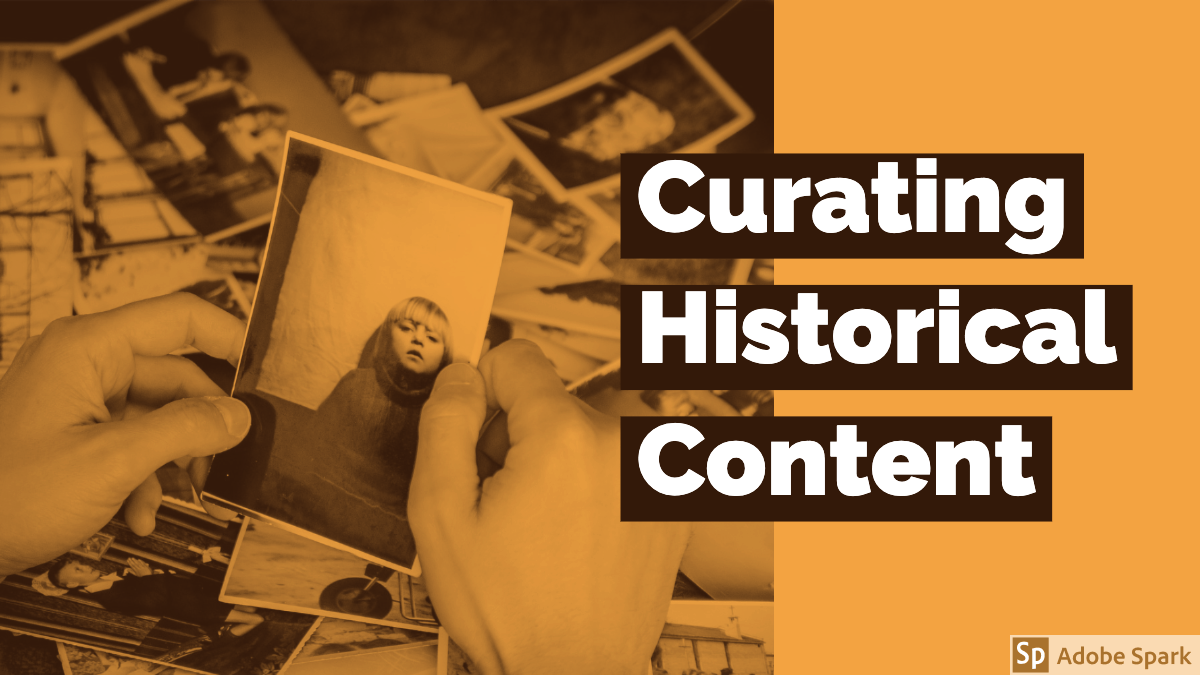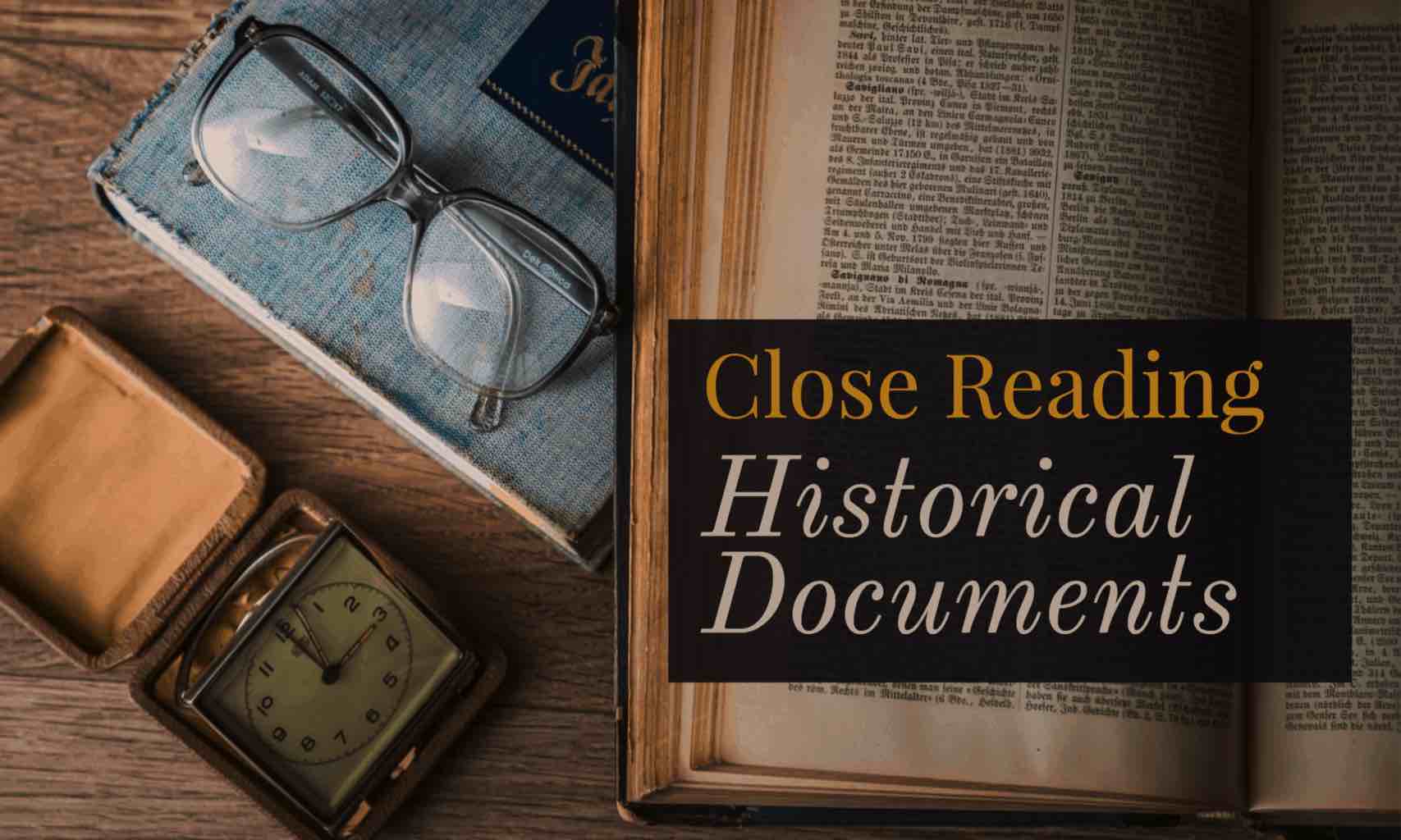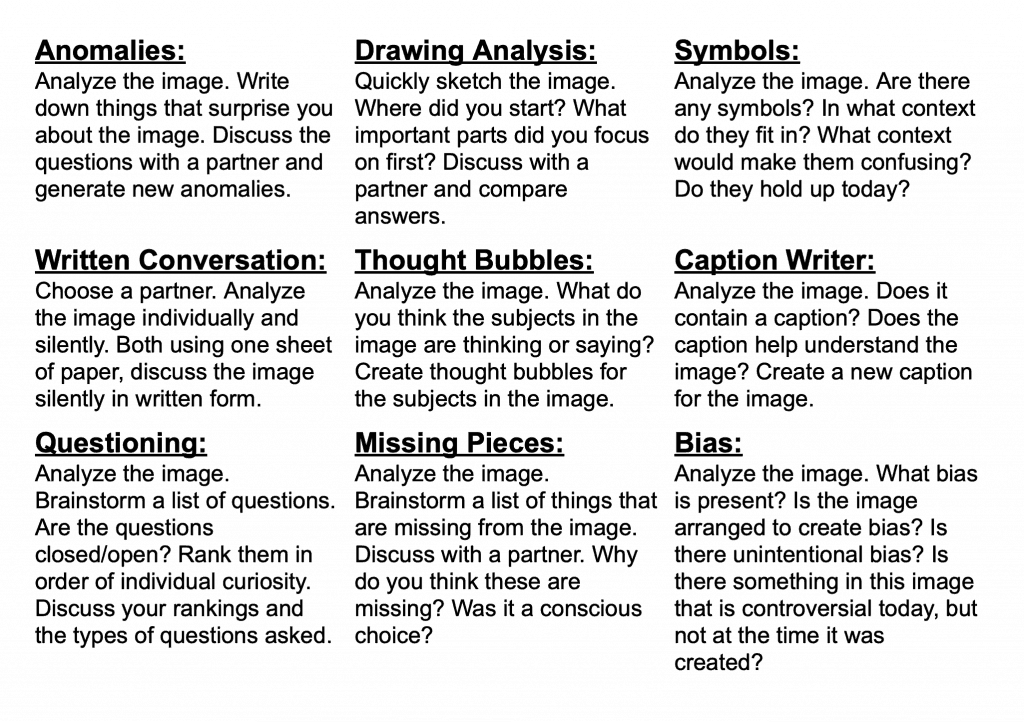Teachers are looking for resources for online instruction. So I am reposting lessons from my Social Studies Methods Course at the University of Portland’s School of Education. See original post here.
Most materials are in the public domain if they were produced before 1923. I see this as roughly equivalent to everything that happened in the world up to and including World War I! If you’re looking for newspaper articles in Chronicling America, for example, you will note that coverage ends in 1922.
Primary sources produced by the federal government are normally in the public domain both before and after the magic copyright date of 1923. That explains why we as teachers can use the fabulous oral history interviews of former slaves collected between 1936 and 1938 by workers from the Federal Writers’ Project.
Focusing your search using a search operator. [site:loc.gov]
Image Detective Activity (inspired by Crop It lesson)
Being able to find and curate historical source material is a foundation of historical thinking. This activity merges three instructional goals: finding / curating historical sources, looking closely at historical sources and using WordPress tools to add images and hyperlinks. It will help students learn how to find material for future lesson design activities.
- Find 3 historical images – use these historical archive sites
- For each image: provide full image with citation in hyperlink back to source
- Then add a of crop area of each image to show one of the following clues (add clue in the image caption) Tips on how to crop an image
- Put all content into a post. Give it a clever title. Include a featured image.
- who or what this image is about.
- where this takes place.
- when this happened or was created.
- what is the creator’s point of view or purpose.
- something I have a question about
Example: Image with two crops

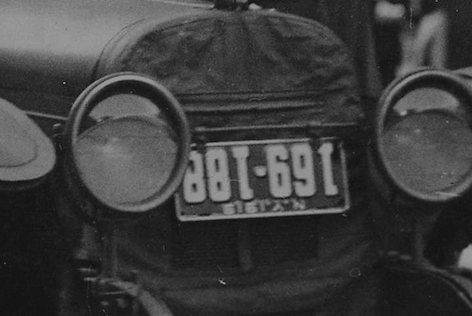
I think they are returning Black WWI soldiers in a parade.
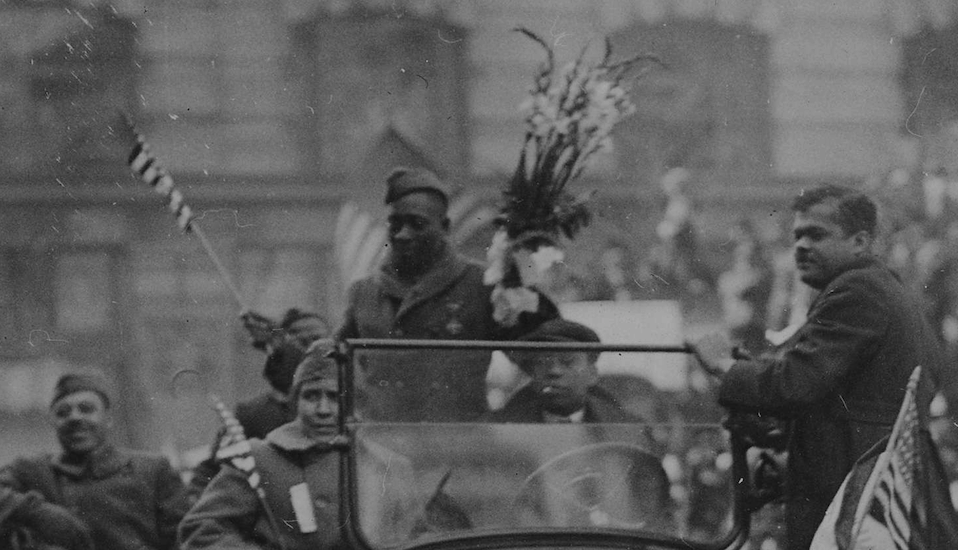
I wonder what else faced them back in America?
In class practice images. Choose one. Add to a sample post. Include source hyperlink and crop with comment.
- Smartly dressed couple seated on an 1886-model bicycle for two 1886. Source
- The 8th Avenue trolley, NYC, sharing the street with horse-drawn produce wagon and an open automobile 1904 Source
- Automobile helped through sandy wash onto mesa 1911. Source
- Women’s Machine Gun Squad Police Reserves, New York City 1918 Source
Sample student work from this assignment
The languages on sign include Armenian, Ladino, English, Greek and Russian.
